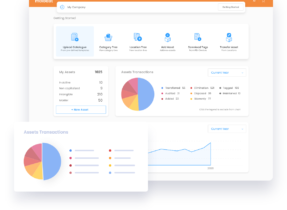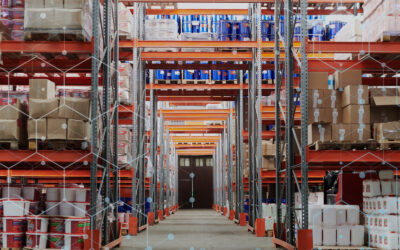How to Utilize Warehouse Space In a Simplified Manner – 8 Tips
Part of good inventory management is learning how to utilize your storage space to your best advantage as well as using the right inventory management system. It's not an easy task by any stretch but it is very important and indeed imperative for any business that involves stock holding, because if you're not using your space to the optimum, you will undoubtedly be applying unnecessary costs to your bottom line. For example, wasted space, inability to locate stock quickly – or at all, not being able to understand your stock position, employee safety and more. In this piece, we'll give you some tips on how to utilize your warehouse space, in a simple way with some inventory management best practices.
Tips to Utilize Your Warehouse Space
1. The Right Software. The most important element of managing your warehouse – space and stock – is to have a quality Inventory Management Software System in place. Something like Mojodat Inventory, the best inventory management software and which is designed especially for the task. Using this warehouse management software frees up your workforce to concentrate on other equally important operational areas.
A system like Mojodat Inventory manages your entire inventory for you and that is critical for any business that holds stock. It immediately helps you to locate stock, pick it, pack it and send it, automating the process so it updates in real-time. Using inventory barcoding and QR codes, along with an inventory mobile handheld application, your team can carry out easy inventory tracking, quickly scan items (with their inventory handheld application) and locate them. It also flags up when stock needs replenishment, alerts you as to overstocks and does everything in advance so you have a better grip on your stock position. This helps your team to forecast and saves you money.
There are lots of other advantages too, there's no need to connect to the internet to update the system, and it integrates with other software systems so different departments also understand stock position and inventory management, this is essential for the accounting team, for example. The other huge benefit is ability to perform quick and easy inventory audits as well as its simplified reporting. At the touch of a button, you can run reports for multiple queries to help you plan your business operations.
2. Understand Your Space Size. It is really important to have the right space and when you know how much stock you're holding, you can work out what you need to use it to the optimum. Spare space needn't be redundant, it can be used to house other business items, such as Fixed Assets perhaps.
Calculate your square footage in your warehouse and multiply it by the height of your facility. This gives you your total size (excluding offices and other non-storage space).
For your actual storage size, multiply the outside dimensions of racking length x width x height of highest load. This gives you cubic volume – and that equates to your maximum amount of warehouse space.
Then you should divide storage by warehouse size and take that amount x 100. This gives you the percentage amount of storage space in your facility. As a guide, it should be approximately 25% because your team needs to be able to move around the space safely and easily.
To calculate your volume and space utilization, add up all the products stored in your warehouse and divide it by the storage area x 100. Then, divide your storage area into sections (for example, your rows of racking) – you'll need to estimate each row. Then, take the results and divide the result by each row. The end result helps you to know where you could better utilize your space.
3. Are You Utilizing Space Above? If you aren't stacking products properly, then you're missing out on extra space. Installing racks, shelves and rows will help you to utilize space above (as long as you are within the regulations). However, be sure to measure the space properly to understand what you can fit above and question whether you have the right vehicles to move around your warehouse and pick items that are higher up.
4. Question Whether One Size Fits All Works. Lots of warehouses use the same size containers, regardless of product but actually, this can result in wasted space and that costs money. So, if you have multiple-size products, generate a set of different size containers to better utilize your warehouse space. Next, store items that are of similar size together. Use your Inventory Management System to work out how many different sized products you have and place smaller items in one area of racking, larger items in another. This helps you to optimize your space.
5. Sort Your SKUs into Product Categories and measure them accordingly, then, classify these categories into 'activities'. These activities could be the number of shipments or the number of picks over a certain time period. Consider how quickly each SKU is required, so you might have faster-moving SKUs marked A and slower moving SKUs marked C. This helps you to prioritize your stock and you should store the faster-moving SKUs in locations that are easier to access, for example, closer to the shipping area or on the ground. Move slower sellers higher up.
6. Perform an Inventory Audit To Determine Poor-Sellers as Part of Inventory Count Best Practices. If you have stock that hasn't moved in over a year, you should remove it to create more space. Your Inventory Management System should be able to do this for you and pinpoint the exact SKUs that haven't moved for a long while. Either sell it off cheaply, give it to charity or see if you can return unsold stock to your suppliers.
7. Reduce Aisle Width. Assess whether you could remove aisle width to fit in more rows. If you use forklifts to pick stock, you do need to find out what the minimum aisle width is.
8. Make Sure There Are No Obstacles In the Way. Sometimes, poor warehouse space management results in boxes left on the floor, stock in the wrong space or general mess. This disrupts the process and causes slow-downs, not to mention risk of safety to warehouse staff. Clear away anything that shouldn't be on the floor and keep the warehouse as tidy as possible. This best practice should be carried out every day to keep your operations efficient. Remove debris, unused equipment, unused pallets, and any stock that's not selling.
Finally, it is always wise to run a quarterly warehouse audit to make sure you are using your space to the optimum. Regularly reviewing slow-sellers and old stock will also help you find that extra space and keeping a neat and tidy workspace helps your warehouse to run more smoothly. An inventory system like Mojodat Inventory (or its sister-product Mojodat Maintenance) will also help you to understand your exact stock position which is essential for utilizing warehouse space properly.
Subscribe to read the full article below.


